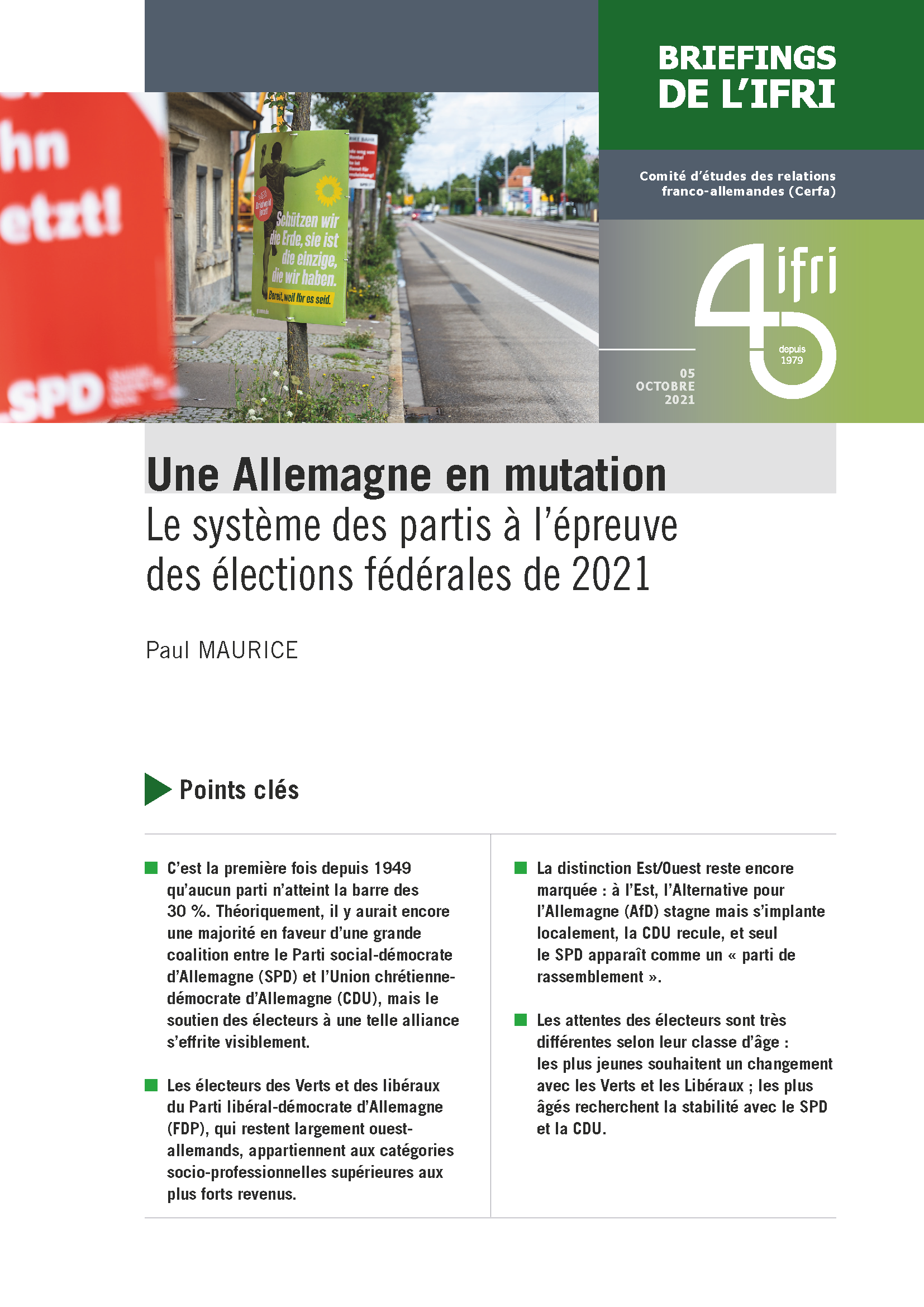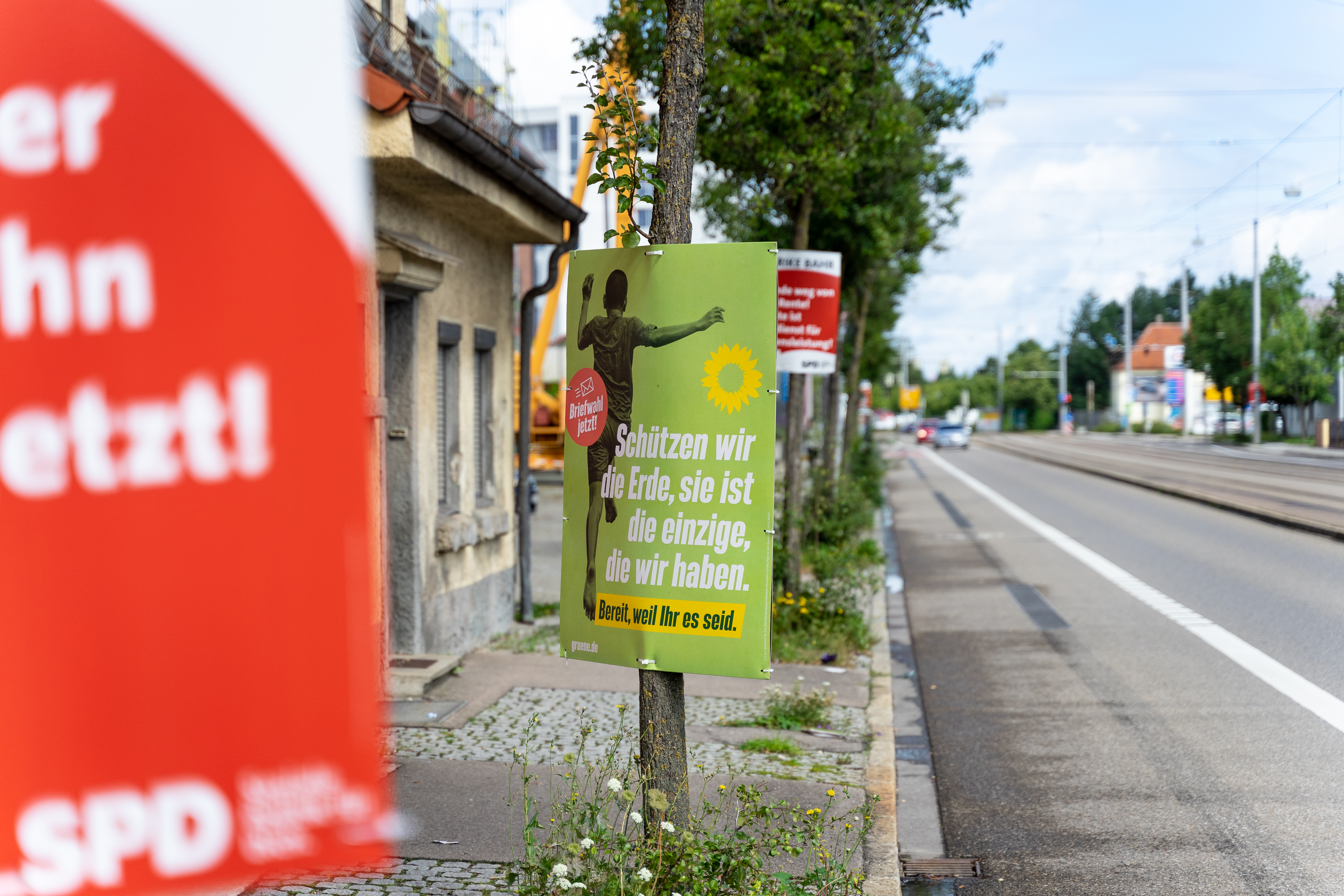A Changing Germany: The Party System Tested in the 2021 German Federal Elections

The German federal elections of September 26, 2021 were marked by the departure of the outgoing chancellor, Angela Merkel, who was not seeking re-election. The scattering of the vote and the high volatility of voters have led to a redefinition of the landscape and geography of parties in Germany.

■ This is the first time since 1949 that no party has reached the 30% mark. Theoretically, there would still be a majority for a grand coalition between the Social Democratic Party of Germany (Sozialdemokratische Partei Deutschlands - SPD) and the Christian Democratic Union of Germany (Christlich Demokratische Union Deutschlands - CDU), but voter support for such an alliance is visibly eroding.
■ Voters of the Greens and the Liberals of the Freie Demokratische Partei (FDP) remain largely West German, belonging to the highest income groups.
■ The East-West distinction is still marked: in the East, the Alternative for Germany (AfD) is stagnating but gaining local ground, the CDU is in decline, and only the SPD appears to be a “people's party”.
■ Voters’ expectations are very different depending on their age group: the youngest want change with the Greens and the Liberals, the oldest want stability with the SPD and the CDU.
Paul Maurice is a Research Fellow at the Study Committee on Franco-German Relations (Cerfa) at the French Institute of International Relations - Ifri, where he specifically works on issues of German domestic policy and Franco-German relations in the context of European integration.
This publication is available in French (pdf): "Une Allemagne en mutation : Le système des partis à l’épreuve des élections fédérales de 2021".






